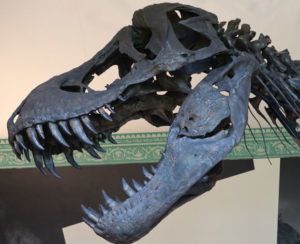Stevns Klint K/T Boundary Site Awarded UNESCO World Heritage Status
The members of the UNESCO World Heritage Committee have awarded World Heritage status to the nine-mile-long cliffs at Stevns Klint (Danish island of Sjaelland). These awards reflect the cultural or national heritage of such locations and do much to help preserve such sites. The chalk and limestone cliffs at Stevns Klint record the K-T boundary, the time in Earth’s history when the dinosaurs and about seventy percent of all terrestrial life on Earth became extinct.
Stevns Klint Cliffs
This site has huge significance to palaeontologists and geologists, as the cliffs have preserved an exceptional fossil record showing a complete succession of fauna and micro-fauna that maps the Cretaceous extinction event and charts the recovery of life on our planet.
Tertiary aged limestone strata overlies much softer, older Cretaceous chalk deposits and clearly visible to the naked eye, is an ash layer which contains substantial amounts of the rare Earth element iridium. The ash layer is believed to represent deposits from the Chicxulub impact event which took place in the vicinity of the Yucatan peninsula (Mexico) around sixty-six million years ago.
Picture credit: Everything Dinosaur
Congratulations to All Involved
We at Everything Dinosaur, congratulate all those people who have been involved in this award, the cliffs at Stevns Klint now join other world famous locations such as Dorset’s “Jurassic Coast” and the Great Barrier Reef of Australia as UNESCO World Heritage sites.
Visit Everything Dinosaur’s website to view dinosaur toys, models and prehistoric plush: Everything Dinosaur.
Extension Ideas
Key Stage 2
- Explore ideas of how and why rock can be deposited in layers, more capable learners can explore what the terms igneous, sedimentary and metamorphic rocks mean
- What does the ash layer represent? Why is this series of sedimentary rocks important in terms of helping to explain the extinction of the dinosaurs?
Key Stage 3
- Look up information on the fossil assemblage that is present at this site, why is this sequence of fossils important? What does it tell us about recovery after an extinction event?
- Discuss with the class the links that such sites have with the theory of natural selection/evolution. Changing climates and other impact events can lead to some organisms gaining an advantage.
Useful link that explores the Stevns Klint strata in more detail: Important Geological Site Awarded World Heritage Status.


